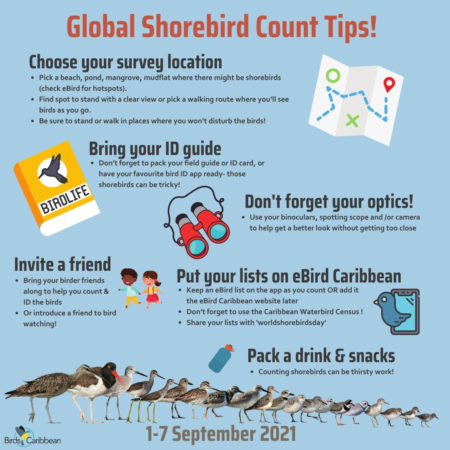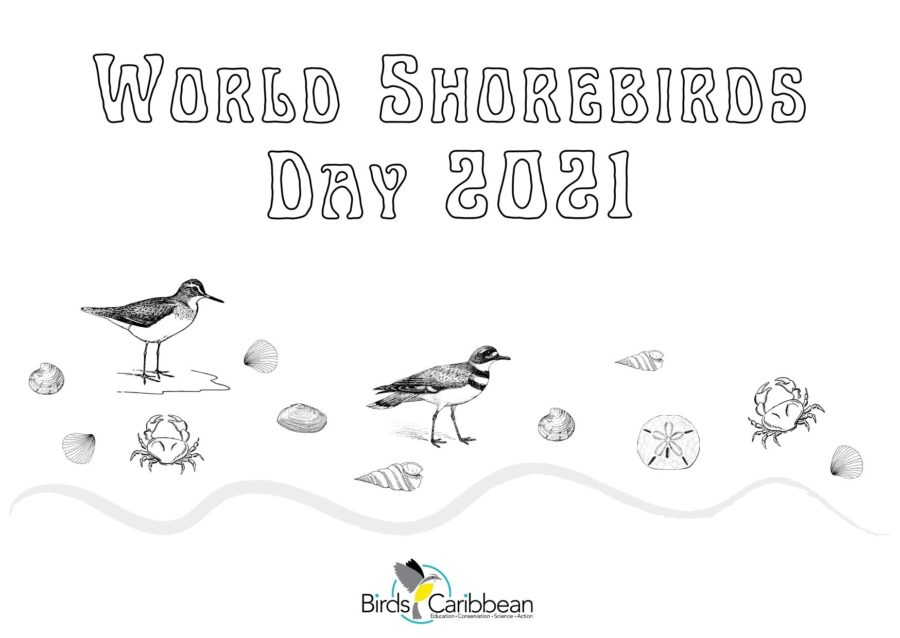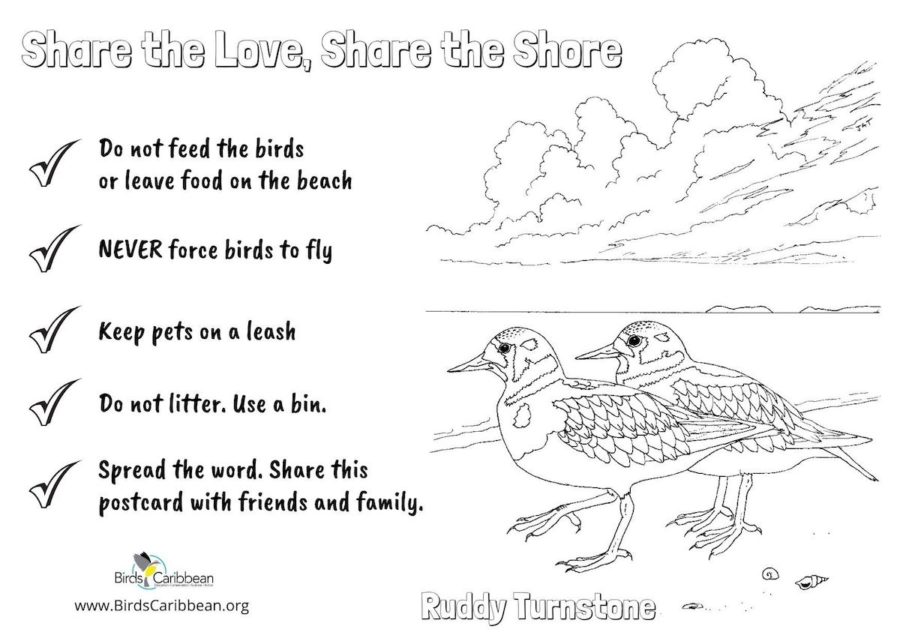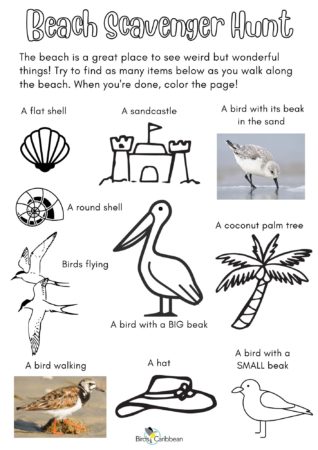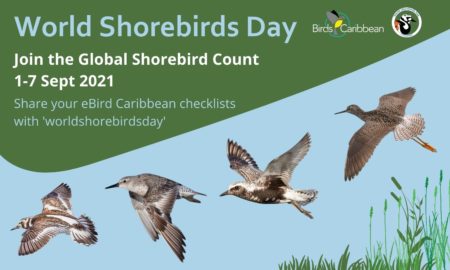 September is right around the corner and migratory shorebirds are making their way south. Please join us this World Shorebirds Day to learn more about these fascinating birds and what you can do to help protect them. Take part in this year’s Global Shorebird Count and check out our cool resources for honing your ID skills and count techniques. We also have free, fun activities for kids and the whole family – read on!
September is right around the corner and migratory shorebirds are making their way south. Please join us this World Shorebirds Day to learn more about these fascinating birds and what you can do to help protect them. Take part in this year’s Global Shorebird Count and check out our cool resources for honing your ID skills and count techniques. We also have free, fun activities for kids and the whole family – read on!
Global Shorebird Count 2021
This year’s Global Shorebird Count will take place from September 1 to 7, 2021. All across the Caribbean and beyond, intrepid birders will be compiling checklists from island to island and recording them on eBird Caribbean. BirdsCaribbean urges you to participate! Our migratory shorebirds are more vulnerable than ever, threatened by human activities such as destruction of their habitats, pollution, disturbance, and climate change. In some countries they are hunted. Altogether this has led to severe declines in populations of shorebirds around the world.
Where are these fascinating birds to be found? While you will find them on shores and beaches, some shorebirds use habitats further inland, including freshwater and brackish marshes and ponds. Shorebirds are also fond of salt ponds, mud flats, mangrove areas, and tidal flats. Check out the new video we created in honor of this year’s World Shorebirds Day!
Make Your Shorebirds Count—Submit & Share Your Data!
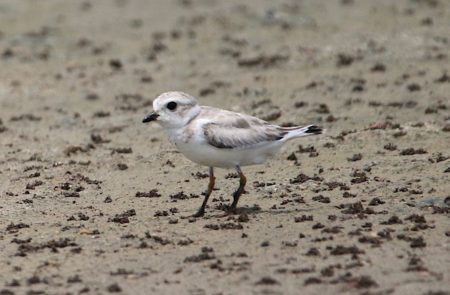
We encourage you to register to participate in the count and be sure share your eBird Caribbean checklist(s) with worldshorebirdsday – the eBird username of World Shorebirds Day. You can find guidelines for sharing checklists here.
eBird Caribbean is a critical tool for tracking and understanding bird migration and population changes – never more so than for our shorebirds. If you do not have an account, it is easy to register – here’s a quick guide to enter eBird data online. There is even a free eBird Essentials course to get you fully oriented. Download the free mobile app for recording your data in the field.
Note that shorebirds are a type of waterbird and any counts you do at wetlands, mangroves, mud flats, coastal areas or beaches at any time of year count as Caribbean Waterbird Census (CWC) counts. When you do your counts Please choose one of the CWC protocols in the eBird app or when you submit or edit your data online. When you are using the app make sure that you are using the eBird Caribbean Portal. To check or change the portal you are using go into your settings on the app and look for “Portal”. To increase the value of your count to science, be sure to count ALL birds at your site, including seabirds, herons and egrets, land birds, etc.
What if you spot a bird with a band on its leg?
While counting shorebirds you may see birds; especially Piping Plovers, Red Knots, Semipalmated Sandpipers, Semipalmated Plovers, Ruddy Turnstones, and Sanderlings, with colourful bands around their legs. Do your best to record the band colors and any numbers or letters – see guidance in the handy graphic. Binoculars or zoom photography may allow you to clearly see the band colors and the numbers engraved onto the band. Scientists use this information to track bird populations and migrations.
You may report your sightings to BandedBirds.org and the USGS Bird Banding Lab which oversee all banding in the United States.
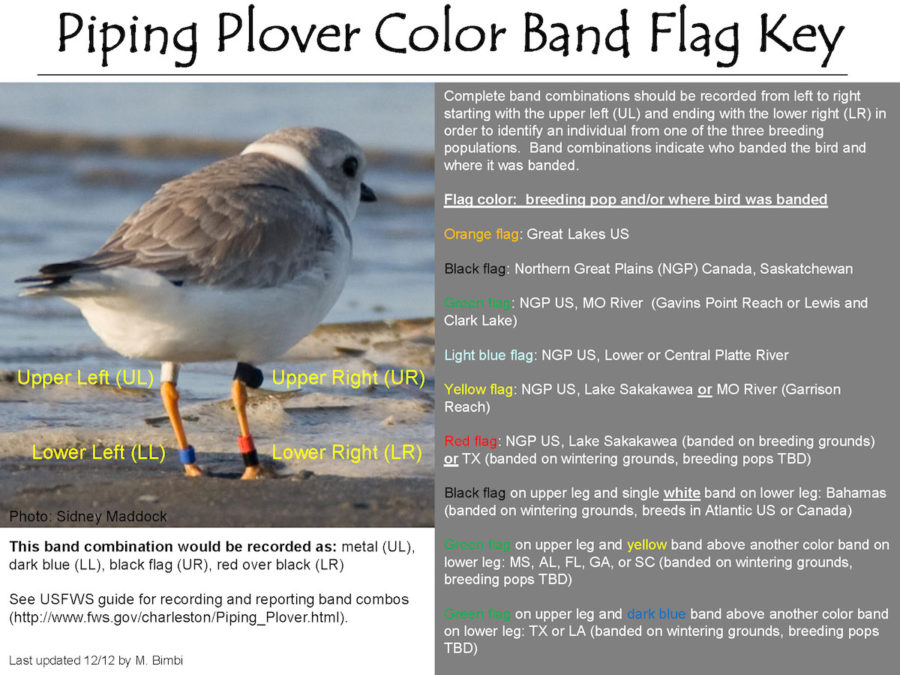
Global Shorebird Count 101
After years of participating in the Global Shorebird Count we have created a list of some best practice tips to help make your count go as smoothly as possible. You may download and share this infographic with your fellow birders.
If you do not already have a favorite place to look at shorebirds, before doing your Global Shorebird Counts, you might need to choose your birding spot. Shorebirds can show up in many different types of wetlands from mangroves, to mudflats, saltponds, marshes, and beaches! If you are unsure where to find shorebirds near you why not take a look for ‘hotspots’ at your local wetlands on eBird. Just click on ‘Explore’ on the eBird Caribbean website, and find ‘Explore Hotspots’. You can open hotspots in a map and then click on a hotspot to see what type of birds have been seen there recently. When you visit your shorebird spot be sure to find a good place to count birds from – you need to have a clear view of the birds, but not be so close you disturb them!
Shorebirds can be challenging to identify, and some species are especially difficult to tell apart. If you have binoculars, a spotting scope or a camera with a good zoom lens don’t forget to take them along. These will help you get a closer look to pick out the ID features, without disturbing the birds. Of course, don’t forget to take you favorite bird ID guide with you when you do your shorebird counts. You might want to print out one of our handy Shorebird ID cards! In fact, you could even do a bit of ‘shorebird studying’ before you go using our useful reference guides and our CWC and Shorebird ID webinars. You can find all these free resources here.
Fun activities to engage kids in exploring wetlands and beaches
These activities were not designed to teach a child how to name and identify shorebirds but rather to give them space to explore and feel connected to their natural environment. Parents and guardians, you will not need to worry about your own knowledge of birds or plants. All you need to do is accompany and participate with your child in these activities.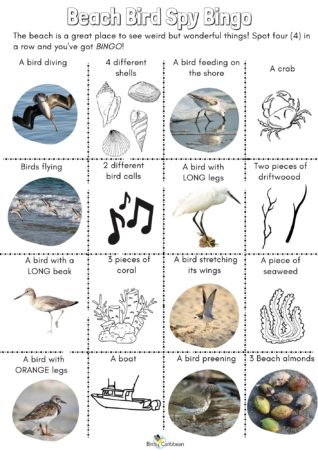
Beach Scavenger Hunt. This activity is suitable for children ages 4 to 7 years old. They are asked to find plants and animals at the beach.
Beach Bird Bingo. This activity is suitable for children ages 8 to 12 years old. They are asked to find items on the list four in a row, horizontally, vertically or diagonally. They do not need to touch or collect any of the items on the list.
Talk about this with your children before beginning any of the activities. They should not touch or collect items on the lists. When observing birds they should speak softly. They do not need to get close to the birds but if they need to, ask them to do so slowly and quietly. You can check off the items (with a pencil or pen), as they are located. When everyone has had a chance to look for the items listed, come back together to chat about what they were able to find or see. For example, why is the bird’s beak long and straight?
World Shorebirds Day 2021 postcard. This activity is suitable for any age. Print and colour the postcard – sides 1 and 2. Then share it with a friend or family member.
Don’t forget to reward your junior birders with a scoop of their favourite ice cream!
They may also enjoy this Snowy Plover colouring book. You can print the colouring book and carry to the beach, just remember to pack the colouring pencils or crayons.
Get Social for Shorebirds
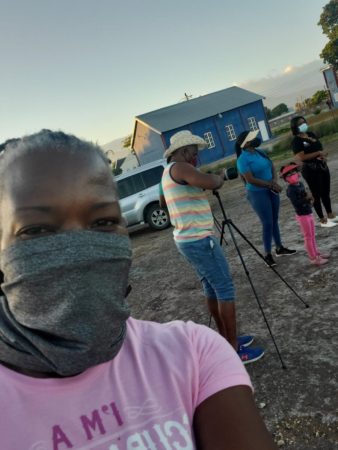
This activity is suitable for anyone 12 years and older. Take photos at your local wetland, beach, mud flat, salt pond, or swamp, and share them on social media; Facebook, Instagram and Twitter, and tag us @birdscaribbean and use the hashtag #worldshorebirdsday2021. The categories are:
Caribbean Shorebirds: snap a pic of a shorebird you saw at your local beach, mud flat, pond or swamp. Please also use the hashtag: #Caribshorebirds
Share the Shore: show us how you are helping shorebirds. For tips on how you can help shorebirds when you visit the beach, check out this blog. Please also use the hashtag: #sharetheshore
My Local Wetland: share a beautiful landscape or seascape photo of your local wetland or if you’re not camera shy, take a selfie in the habitat. Please also use the hashtag: #mylocalwetland and #HumansofBirdsCaribbean
Use a phone or any other camera that is available, but you must tag @birdscaribbean and use the hashtags provided. We look forward to seeing and sharing your amazing photos and reading your stories.

